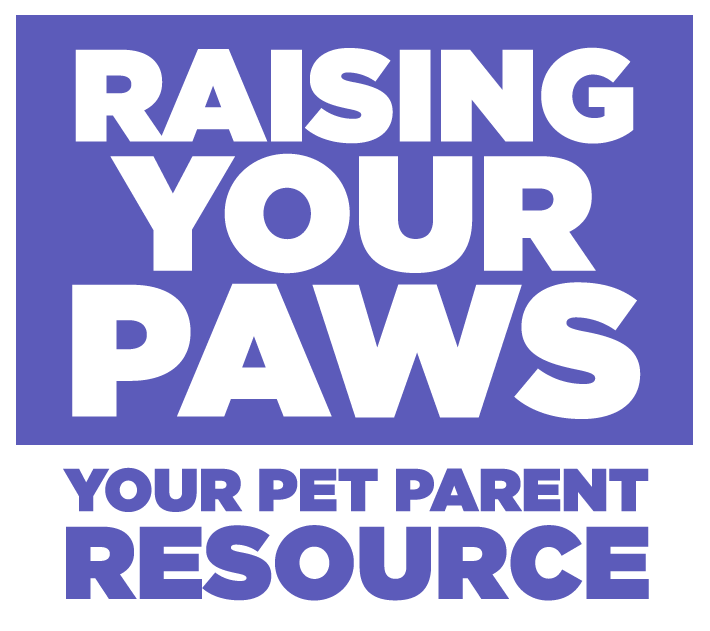If your puppy is between 6 – 8 months old, (11 months or older in larger breeds) you may have noticed its cute, compliant and quiet behavior has changed. Almost overnight, your “baby” has gotten rebellious, noisy, is breaking the rules, ignores you AND has an attitude. Welcome to a dog’s normal growth stage. What’s happened, is your pup has become a teenager. In this week’s episode of Raising Your Paws, hear about some of the expected, but challenging changes that may occur in your canine adolescent.
Here are two other changes they may exhibit that you might find surprising.
Your dog may become fearful and shy – where they used to be outgoing and brave.

Just like with human teenagers, a dog, can suddenly become shy and more withdrawn and even fearful of things that they used to be totally at ease around. Where in the past, your pooch would bound up to new people she’d encounter, she now may cower and hide behind your legs. Patricia McConnell, applied animal behaviorist, dog trainer and prolific author, experienced so many confident puppies becoming fearful adolescents that she gave this a name, “juvenile-onset shyness.” Since you don’t want this cautiousness to grow into fear-related aggression, you’ll need to go back to all the socializing experiences you provided when the dog was a young puppy. Introduce them to other dogs and all sorts of different people – all over again. In the podcast, you hear me tell Patricia’s story of how one of her dogs, Pip, a border collie, all of a sudden became fearful of men. Patricia turned the arrival of a man into a happy thing, and not a scary thing for Pip, by having every man, throw a ball at her dog upon coming into her presence. You’ll want to plan positive experiences for your dog similar to this. These days, whenever my dog Rosy first spots my mail carrier while taking our walks, who she had become afraid of, I call Rosy’s name, get her attention and give her a small bit of a yummy treat. Now seeing the mail person means something good will happen and her fear has dissipated.
Your pooch may start guarding its food – something that he had never done before as a puppy.
Your adolescent may become more protective over possessions – showing some resource guarding behaviors that did not exist before. Resource guarding means the dog is feeling possessive about what’s his. Could be its food or toys. And if your pup now perceives you as a threat – thinking you may want to eat out of his food bowl, or take and keep her favorite hedgehog toy, she may be fully prepared to give you a strong warning, meaning, “don’t even try to move in on this” by growling, snapping, or snarling, at you. This is NOT a desirable way for your teenager to assert herself. It’s very different from the “Keep Out” sign that a human 12 year old places on the door to their room.
You don’t want your dog to get into the habit of being defensive around its food and there are things you can do to deal with the issue of the guarding, but first a word about growling.
Remember a growl is a warning. Warnings are good things – they alert you to what could come next. Never push your dog to act on it – from a dogs point of view he has given you fair warning not to come closer and if you ignore him, he may feel compelled to take the next step and snap or bite. So back off from your dog when she growls – then you can deal with the reason she growled. Many people get upset at their dogs for growling, thinking its bad, in and of itself, and punish the dog for the growl. Think about this though, don’t you want to know if your dog is feeling so threatened by something that they are ready to bite to defend themselves? You WANT your dog to warn you that the next thing coming is most likely the bite.
Listen to the podcast episode where I talk about the importance of the growl, and the reasons you don’t want to punish this away in Raising Your Paws podcast episode number 015.
The growl is not the problem to solve – its what’s behind it. If the reason for the growl is because your adolescent dog is now guarding its food from you, where they weren’t before, its time to start some food exchange exercises or if you had originally used them with your new young puppy, bring them back and do them again. However I do want to caution you, if the guarding is serious and you fear that you may get bitten, even trying to do food exchanges, contact an animal behavior consultant right away. Here is a good one, in Chicago Illinois, I spoke to in Episode number, 76. Dr. Kelly Ballentyne, a certified Veterinary Behavior Consultant, explains what behavior consultants do. Here is the link to find a behavior consultant where you live.
If you have multiple dogs at home, your growing puppy may even test his ranking in the pack, by approaching another dog’s food. This little experiment is likely to earn him an abrupt lesson in both manners and status by the other dog. As long as the older dog just gives a warning or an injury free correction, like a small nip, let it be. Hopefully, the bold teenager, will have just learned its lesson and leave the other dog’s food bowls alone. If not, and the pup keeps barging in to the point that serious fights break out, feed the trouble maker separately and you may want to consult with a trainer or animal behaviorist for how to deal with this going forward.





0 Comments